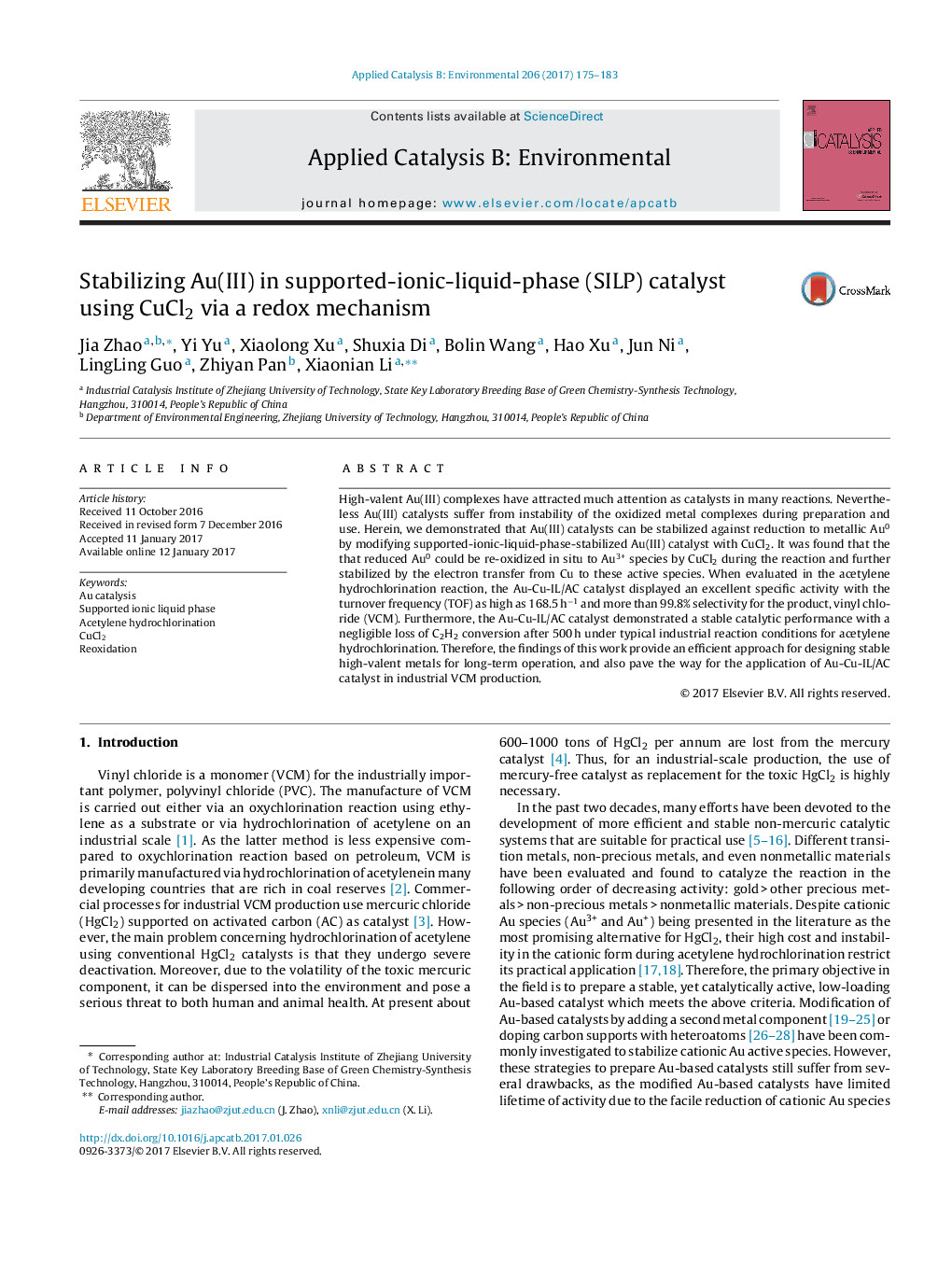| Article ID | Journal | Published Year | Pages | File Type |
|---|---|---|---|---|
| 6454660 | Applied Catalysis B: Environmental | 2017 | 9 Pages |
â¢Au(III)-Cu(II)-SILP catalyst was prepared on AC support.â¢The catalyst showed superior catalytic activity for acetylene hydrochlorination.â¢The catalyst displayed stable performance after running for 500 h.â¢The enhanced catalytic stability may attribute to the reoxidation of Au(0) by CuCl2.
High-valent Au(III) complexes have attracted much attention as catalysts in many reactions. Nevertheless Au(III) catalysts suffer from instability of the oxidized metal complexes during preparation and use. Herein, we demonstrated that Au(III) catalysts can be stabilized against reduction to metallic Au0 by modifying supported-ionic-liquid-phase-stabilized Au(III) catalyst with CuCl2. It was found that the that reduced Au0 could be re-oxidized in situ to Au3+ species by CuCl2 during the reaction and further stabilized by the electron transfer from Cu to these active species. When evaluated in the acetylene hydrochlorination reaction, the Au-Cu-IL/AC catalyst displayed an excellent specific activity with the turnover frequency (TOF) as high as 168.5Â hâ1 and more than 99.8% selectivity for the product, vinyl chloride (VCM). Furthermore, the Au-Cu-IL/AC catalyst demonstrated a stable catalytic performance with a negligible loss of C2H2 conversion after 500Â h under typical industrial reaction conditions for acetylene hydrochlorination. Therefore, the findings of this work provide an efficient approach for designing stable high-valent metals for long-term operation, and also pave the way for the application of Au-Cu-IL/AC catalyst in industrial VCM production.
Graphical abstractDownload high-res image (155KB)Download full-size image
